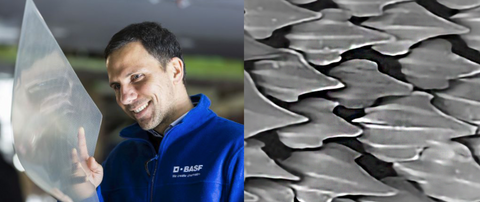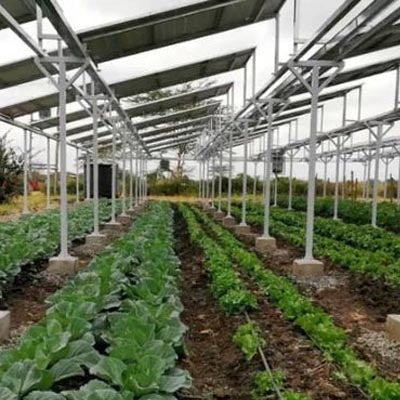Positive Eco News in March 2022
The news is always full of doom and gloom, so we have compiled three of our favourite positive new articles this month that will make you smile...
These solar panels are harvesting the sun twice in Kenya.

Solar panels could be used to improve crop production, according to new research. A collaboration between the University of Sheffield, World Agroforestry, and Latia Agripreneurship Instituten based in Kajiado, Kenya, has found potential in initial tests. The project showed increased agricultural production on land where solar panels were used to provide cover for the crops While solar panels being used to generate electricity is not new to Kenya, the idea of using solar panels for agricultural production is. The agrivoltaics technique allows users to harvest solar energy twice. This energy is used by crops and for generating power to be used in homes. According to the researchers behind the study, cabbage planted under the panels grew a third bigger than those planted in controlled plots with the same amounts of fertilizer and water. Researchers also planted aubergine and lettuce, which also showed promising results.
Judy Wairimu, an agronomist at the Latia Agripreneurship Instituten, says that the experiment’s findings are promising. “We wanted to see how crops would perform if grown under these panels,” said Wairimu. “Doubling up the output of the same patch of earth to generate power and cultivate food can go a long way towards helping people with limited land resources.” Dr. Richard Randle-Boggis of the University of Sheffield adds that this initial project can help guide the potential of agrivoltaics in East Africa. “We needed to build a test system to see if this technology will be suitable for the region,” Randle-Boggis said. The agrovoltaic solar panels are erected three meters from the ground, providing sufficient room for the farmer to work. Researchers say that the panels can be elevated for big farms where large machinery is needed. The system offers an alternative to regions where the adoption of greenhouses has been a challenge. Solar energy has potential that is yet to be fully utilized in Africa. While Randle-Boggis acknowledges that the system has its shortcomings, agrivoltaics could help “areas of Kenya which are not currently suitable for horticulture.”
Shark-Inspired Film Cuts Tons Of Carbon Emissions
How can studying biology can help reduce global carbon emissions?
Meet AeroShark, it’s a thin film that replicates the teeth-like, aerodynamic scales on a shark’s skin (properly called “denticles“) to reduce the wind resistance on a large surface — like an airliner’s wing. It’s a small, but noticeable improvement in overall efficiency that could save even small airlines like Swiss (shown) thousands of tons of jet fuel and C02 emissions every year. Developed by Lufthansa and BASF, AeroShark is an adhesive film that immediately reduces fuel consumption — and, as a consequence, carbon emissions — from just about any vehicle that has large, smooth surfaces. The idea is that millions of years of evolution led to sharks moving away from a perfectly smooth skin towards the denticle design that reduces hydrodynamic drag enough to give the sharks that have them an evolutionary advantage. It’s a successful adaptation that’s been around since the time of the dinosaurs, and if it works in under water, the AeroShark team figured it would work in the air, too.
AeroShark Denticles

Engineers working for the airline, Swiss, calculated that 950 square meters (10,225 sq ft) of AeroShark film applied to a Boeing 777, in specific patterns that are aligned with the airflow around the fuselage and engines, would be enough to immediately reduced drag and fuel consumption by fully 1.1 percent. That may not seem super impressive to lay people, but by sticking AeroShark on all 12 of its 777s, Swiss projects it will save a staggering 4,800 metric tons of jet fuel every year, and reduce its carbon emissions by 15,200 tons in the process! Lufthansa has also announced plans to roll out the AeroShark film on its entire cargo freight fleet of Boeing 777s as well. That’s “just” 10 planes, but it’s enough to represent a savings of more than 3,700 tons of jet fuel and 11,700 tons of CO2 emissions, annually. What’s more, the AeroShark team believes those estimates are low, since the film might be slightly more effective on cargo planes that don’t have window openings to work around.
Lufthansa and BASF are working to develop and improve the AeroShark technology even further, and seem to think the product could eventually be improved to reduce fuel burn and emissions by up to 3 percent over existing aircraft. In 2019, the global airline industry used more than 95 billion gallons of fuel. A 3 percent savings would mean 2.85 billion fewer gallons of fuel burned — which, come on. That’s a huge reduction in carbon emissions!
This billionaire wants to buy up Australia's coal plants - just to shut them down

Most billionaires have quite a bad reputation when it comes to climate change. Cannon-Brookes - Co-founder of software giant Atlassian and the third richest person in Australia, is known to be a keen supporter of the global transition to renewable energy - and quite a vocal critic of his country’s lack of action. Frustrated with the government’s disregard of climate concerns, Cannon-Brookes believes he can make a difference. Last year, he pledged $350 (€313) million in personal funds to finance non-profits fighting climate change and invest in projects promoting clean energy. And with his $20 (€17.9) billion of net worth to back him up, Cannon-Brookes is now taking the matter into his own hands. On 19 February, the billionaire made a bid to buy AGL, an electric company which owns three of Australia’s total 16 coal plants. Why? So that he can do what the Australian government won’t - shut them down for good. Prime Minister Scott Morrison is a strong opposer of the billionaire’s bid. The politician argues that shutting down the plants by 2030 will lead to a sharp increase in electricity prices. But Cannon-Brookes promises that won’t be the case. He claims that the notice period required for closure is eight years, which is longer than required by law and plenty of time for the market to prepare for changes. AGL would continue to provide electricity to the millions of customers it already serves - committing to buying external supplies if its own production doesn’t suffice. The 42-year-old tech entrepreneur's plan could actually help the country transition to renewable energy, as the government currently has no clear plan in place.
What would the impact be?
The impact of closing AGL’s coal plants would be massive: the energy operator is currently the country’s biggest gas polluter, accounting for 8 per cent of Australia’s total emissions. Australia currently has the highest emissions per capita in the world from burning coal for electricity. Cannon-Brookes hopes to cut these emissions to zero by 2035. Under the company’s current plans, AGL intends to keep its least efficient plant operational until 2048. AGL is the biggest energy supplier in the country, serving one in three Australian energy consumers. A green revolution within the company would cause a real sea change across the country. Cannon-Brookes’ bid is more than a billionaire’s philanthropy: it’s a chance for an entire country, torn between international pressure and a government hostile to change, to make a much needed commitment to sustainability.












Leave a comment
All blog comments are checked prior to publishing